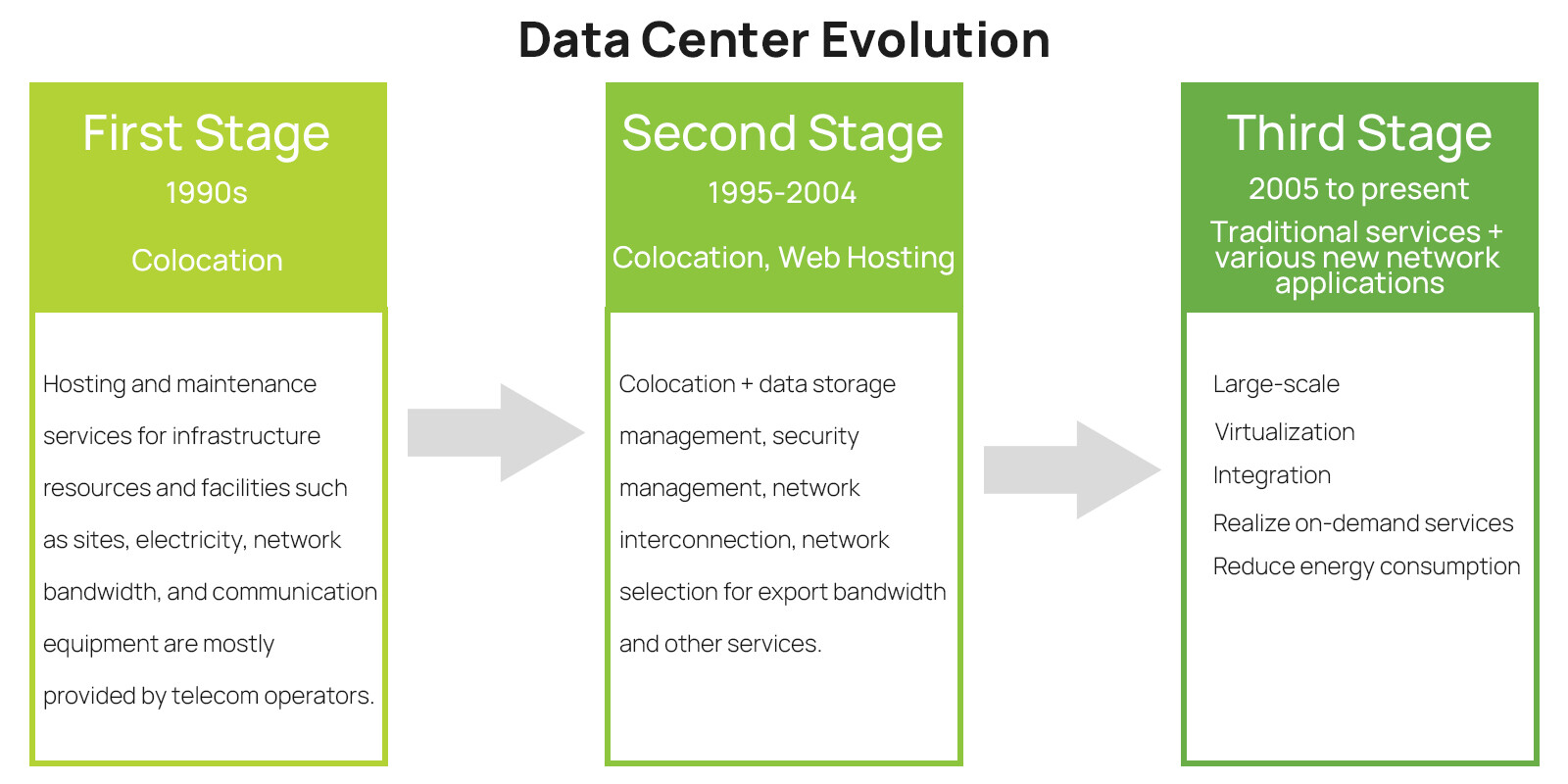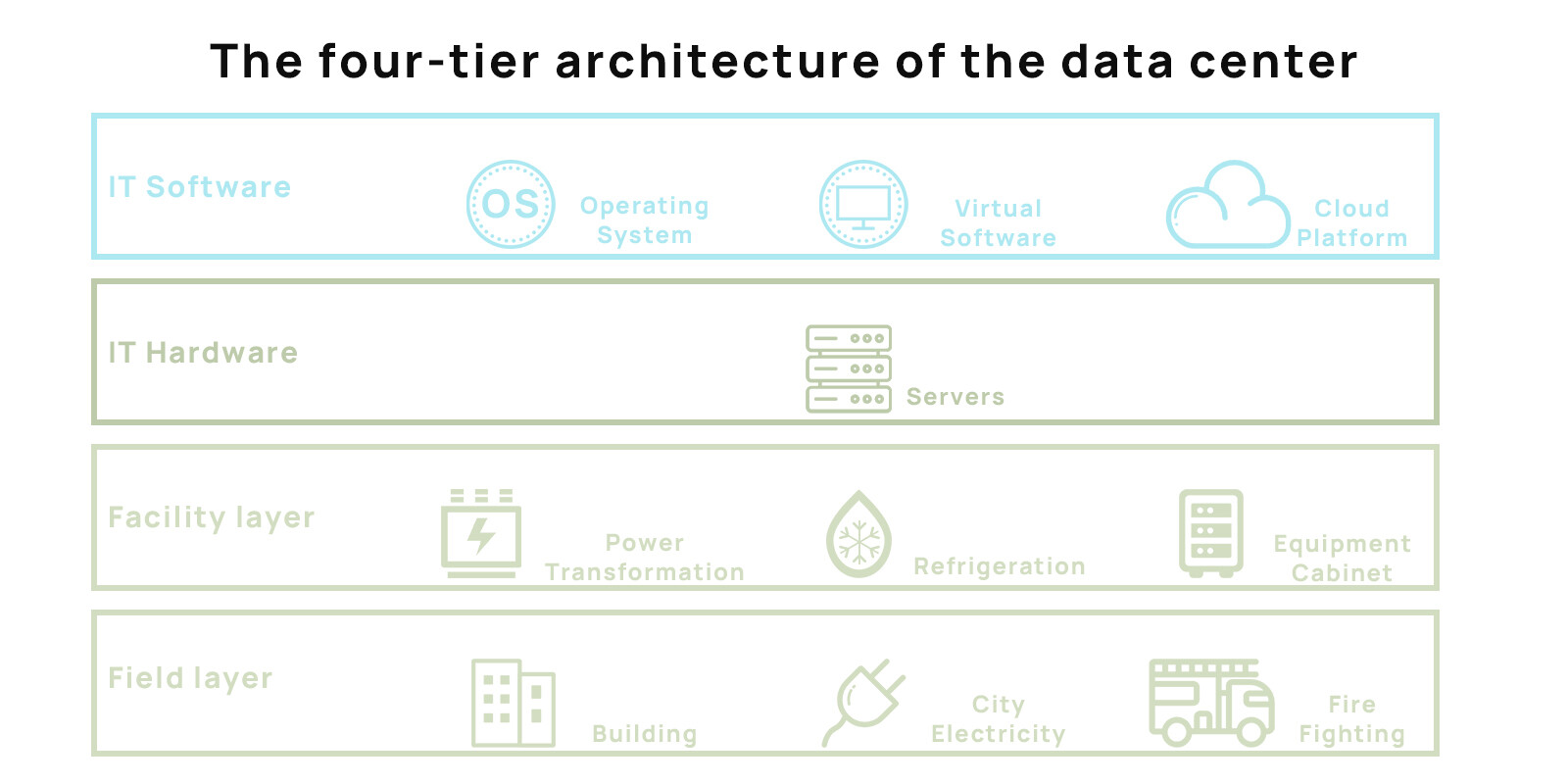A Data Centre (DC), a building site that provides an operating environment for centrally placed electronic information equipment, includes mainframe rooms, auxiliary areas, support areas and administrative areas. As an important part of the arithmetic infrastructure, data centres are data hubs and arithmetic carriers for the development of new generation digital technologies such as 5G, artificial intelligence and cloud computing, and play an important role in boosting the growth of the digital economy.
Classification of Data Centres
Data centres can be classified into Internet Data Centres (IDCs) and Enterprise Data Centres (EDCs) depending on all the nature or service targets. IDCs refer to the use of corresponding server room facilities to provide placement, agency maintenance, system configuration and management services for users' Internet or other network-related equipment such as servers on an outsourced rental basis, as well as the provision of database systems or server equipment for rent and their EDCs are data centres that are built and owned by enterprises or organisations and serve their own business.
According to size, data centres can be classified as mega, large and small to medium. Very large data centres are those with a size greater than 10,000 standard racks; large data centres are those with a size between 3,000 and 10,000 standard racks; and small and medium data centres are those with a size less than 3,000 standard racks. The new construction of mega and large data centres focuses on climate and energy supply, while small and medium-sized data centres are mainly built in areas close to the user's location and with easy access to energy, and are flexibly deployed according to market demand. The levels are often based on the Uptime Institute's industry standard, which classifies data centres as T1, T2, T3 and T4 in terms of availability.

In the early days of data centres, they were relatively simple. As data volumes increase, data services become more complex, life and production become more dependent on the Internet and power consumption grows, so do the standards for data centres, mainly in terms of standardisation, stability, energy efficiency and high density.

Operator Classification, Relationships and Comparisons
The main builders of data centres include telecoms operators, independent third parties and large internet companies, with a complex partnership and, in a few cases, competition between the three. The core strengths of telecom operators are their monopoly on bandwidth and other resources, their widely distributed server rooms, and their systems that reach down to the county level. The core advantage of independent third parties is their rich experience in construction and operation and maintenance. The core strengths of internet companies are their own use and therefore the ability to plan, design and do all the virtualisation and cloud processing in a unified manner. Internet companies tend to be more thorough in their use of new technologies, but in the industry chain of the data centre itself, they act as buyers and do not compete in the market (what they sell to downstream is generally cloud products). Compared to telecoms operators, independent third parties are gaining ground due to the speed of construction, service models and the importance attached to them.

Cloud computing is often compared to the foundation of the information industry, and the data centre is the foundation of cloud computing. Data centres are located in the upper reaches of the information industry, providing the foundation for various internet services. Data centres have both real estate and IT attributes, and can be divided into four tiers from the site to the IT software, with each tier having weaker real estate attributes and stronger IT attributes. Most data centres stop at the facilities level. When the type of customer is a large customer who chooses to access the network on their own, or when the service provider is not qualified to provide network services, it is a simpler DC rather than an IDC, and when IT hardware is provided, the business starts to change to server rental. When IT software is provided, the business generally transforms into a public cloud or a proprietary cloud vendor.

The structure of a data centre
As a whole, the hardware of a data centre is divided into two categories, namely the main equipment and the supporting equipment.
The main equipment is the equipment that actually implements the computing and communication functions, i.e. the IT arithmetic equipment represented by servers and storage, and the communication equipment represented by switches, routers and firewalls.
Supporting equipment, on the other hand, is the underlying basic support equipment (also including some facilities) that exists to ensure the proper functioning of the main equipment.
The underlying basic support equipment facilities, which are further divided into various kinds, are mainly power supply and distribution systems and cooling and refrigeration systems, in addition to fire-fighting systems, monitoring systems, building management systems, etc.
Nowadays, data centres commonly use optical fibres instead of network cables for high bandwidth data transmission. Therefore, optical fibres, optical modules and optical communication equipment (OTN, etc.) have become an important part of data centres. In data centres, optical modules exist everywhere, and modules are already the most widely used products in data centres, so there is no way for data centres to operate without optical modules.
In terms of technology evolution, 10G, 40G, 100G optical modules and cables have been widely used in data centres, and are currently in the cycle of iteration from 100G to 200G/400G high-speed optical modules. From the point of view of the rate of modules and cables, 100G will slowly withdraw and give way to 200G and 400G modules, especially 400G modules. 800G will also gradually start to take up volume.